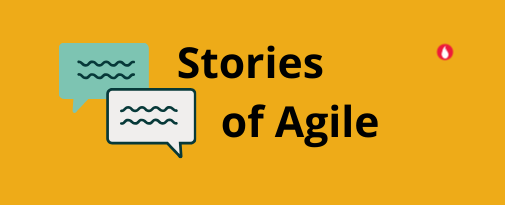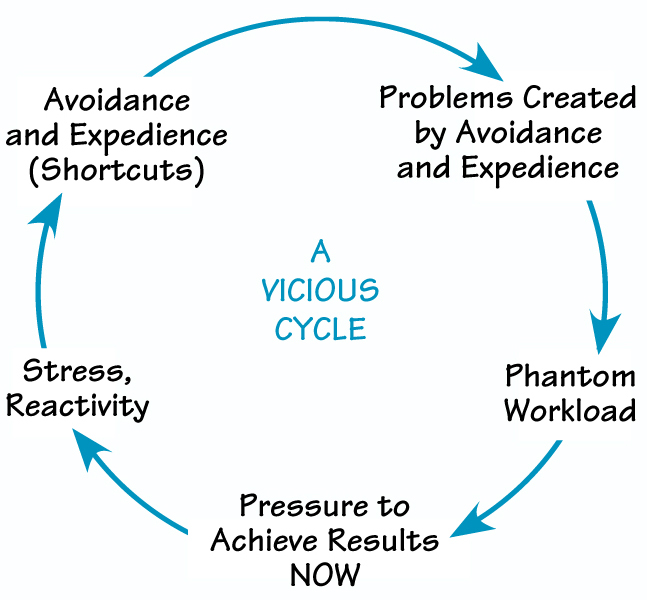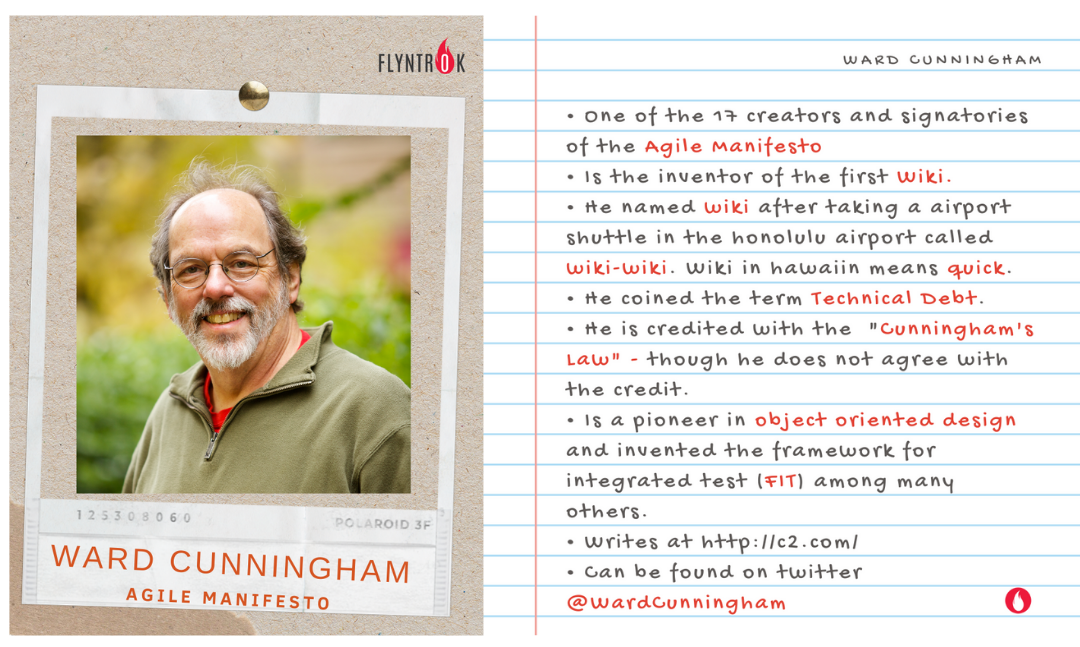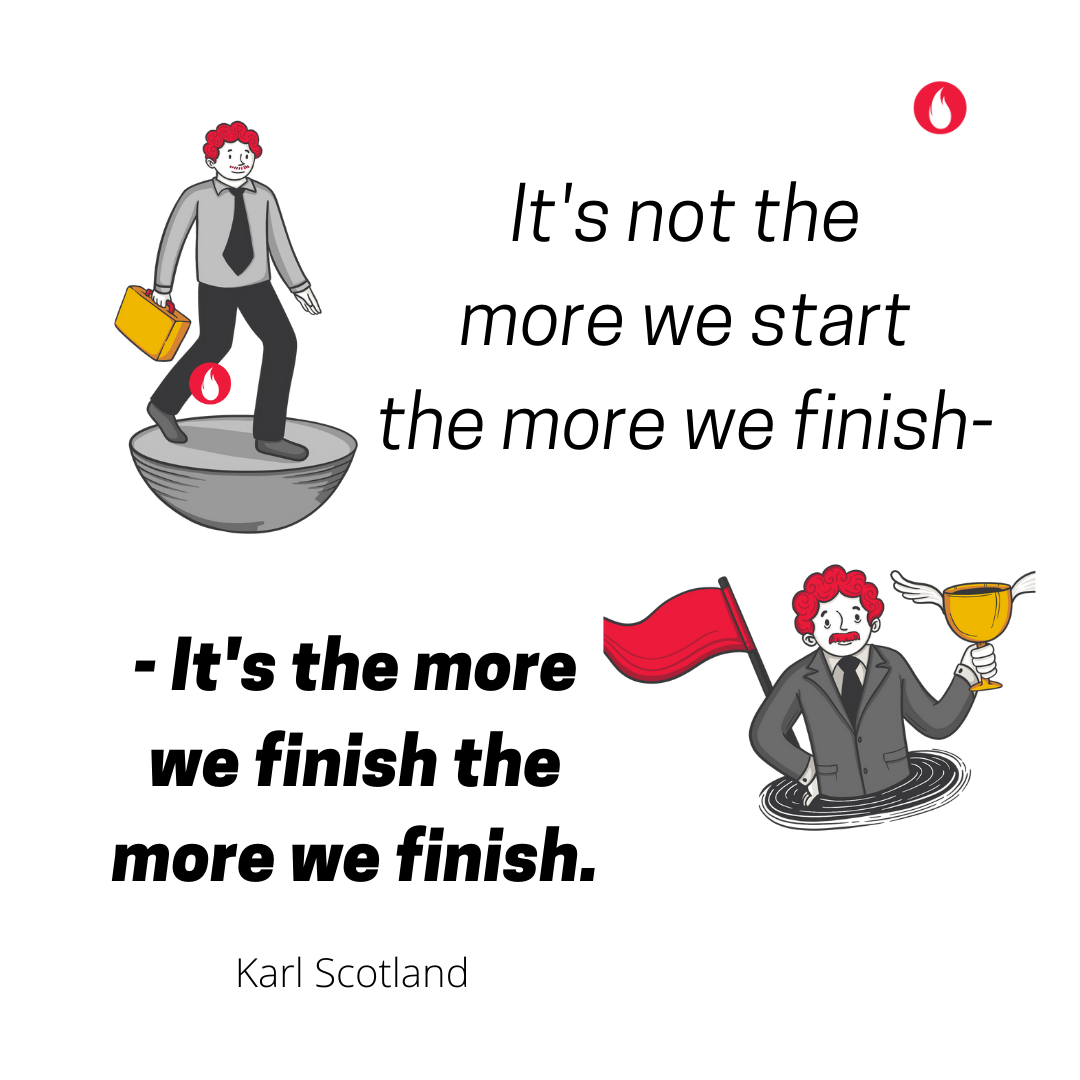Highly productive teams are unique in what they don’t do, not what they do. Highly productive teams are good at preventing distractions to their priorities. A leader’s main task is to help the team stay focused on agreed priorities and what is important. This story from Vistaprint picks up from the last post that we wrote. With leaders at Vistaprint realising they were not helping their teams focus with too many priorities. How did leaders at Vistaprint manage the problem of prioritization in the firm? They leveraged Agile to empower their teams to say no and focus better!
Let’s find out how.

Agile stories
The Enterprise visibility room (featured here in the last edition) showed leaders that employees were working on too many priorities. Employees were confused and felt overwhelmed with the number of open loops. The surprised CxO team of leaders, decided to take stock. They got together to list down all the priority areas they had communicated to the team in the last 12+ months. The CxO team found more than a 100+ areas they had told teams in individual/ functional/ organisational capacities as priority areas. They had assumed that many of these areas were completed / stopped. Instead, teams were still working on them in different stages.
The CxO team knew that if everything was a priority, then nothing was a priority. They got together to prioritise as a team, the organisational focus areas. Their first attempt at prioritisation did not go well. The CxO team found it hard to make trade-offs that leaders must make, to help their teams say no. They struggled with trading off short term vs long term priorities, urgent vs important. The CxO team ended up with 80 priority areas that they shared with the teams. However they promised to do better next quarter.
Why is prioritisation important?
Prioritisation is important to help the teams sustain their pace of work through long periods. Often when leaders don’t help their teams say ‘no’ to tasks, two things happen:
- Teams pick up the urgent and easier tasks, as compared to the important ones. Research has shown that humans are very bad at estimating the value of a task. We resort to the heuristic of time urgency to choose what we work on, often called ‘Time Poverty effect“.
- Teams create phantom workload. Phantom workload is the unintentional work created when teams either take expedient but ineffective shortcuts. Or avoid taking on essential but difficult tasks.
The consequence of phantom workload includes rework, upset customers, and chronic organisational conflict. Other tell-tale signs include lengthy unproductive meetings, extensive approval process and time wasted solving the same problem again and again. And of course, team fatigue and low morale.

Second attempt at prioritisation
Back to Vistaprint.
In the ensuing quarter, leaders gathered to identify organisational priorities and did better. They reduced the priorities given to the team from 80 to 20. But they knew it wasn’t enough and there were still too many priorities.
So, they gave their teams the permission to say no.
Or to be more precise “Stop Starting – Start Finishing’.
Stop Starting – Start finishing
While the CxO’ s had given the team 20 priorities, the teams were told not to start all of them at once. Teams were given the freedom to work on 5-7 priorities and say no to the rest. They were expected to complete the present WIP progress priority area and only then start on the next one. This effectively reduced WIP items and brought clarity to the teams. Vistaprint saw huge improvements in productivity after these changes.
Humans are social creatures. We thrive on reciprocation and hate being seen as confrontational. By removing the stigma and negativity in saying No, leaders showed that team members are free to focus. Focus on the most important priority area and then move to the next one.
This way of prioritization and working ensures that teams can maintain their pace of work over long durations without burnout. This is called a ‘sustainable pace at work’. Agile mindsets and methodologies help create a sustainable way of working for teams.
Clearly a sustainable pace of work is inter-woven into many aspects of Agile. Could it be one of Agile’s most crucial reasons for thriving in industries and contexts for over 20+ years?
Apart from one story which captures the human centric change in the world of Agile, the Agile OWL brings to you every fortnight, the latest reads, books, personalities, and quote from the world of Agile and its methodologies. Stuff that caught our attention. This is edition 37 and we carry seven useful links for you. Tell us what you thought of them

From social media:
- We have been getting a bunch of questions around – what is a user story? What does a good user story look like? Can user stories be used outside IT? We thought a simple but in-depth explainer about user stories may be useful. Here it is.
- How do you estimate the time you will take to reach your destination? Do you make an optimistic estimate or a risk-averse one? Turns out that we use the same heuristics while estimating delivery at work. Here are timeless tips from Mike Cohn on 5 ways to estimate better.
From the Agile world:

From the bookshelf:
- Personal Kanban: Mapping Work | Navigating Life: This book describes how the practice of Kanban can be applied to personal projects and small teams. It’s a simple read and chapter 2 can take you directly to the how (in case you are short of time).
From the tool box:
- A Kanban board is the featured tool this edition. You can choose to create your own physical or digital board for your personal and team projects. Here is a simple explainer of the tool.
#AgileQuotes to sign off:

Note : This post is Edition 37 of the Agile OWL from the OWL umbrella. The Agile OWL is a newsletter focused on the human experiences and stories within agile transformations. Sign up to receive the newsletter here







